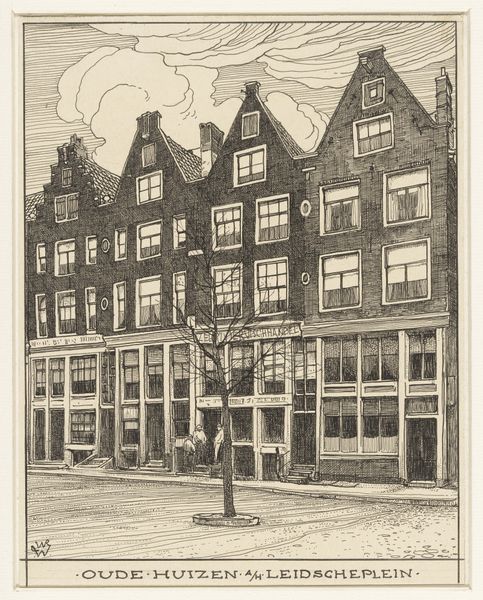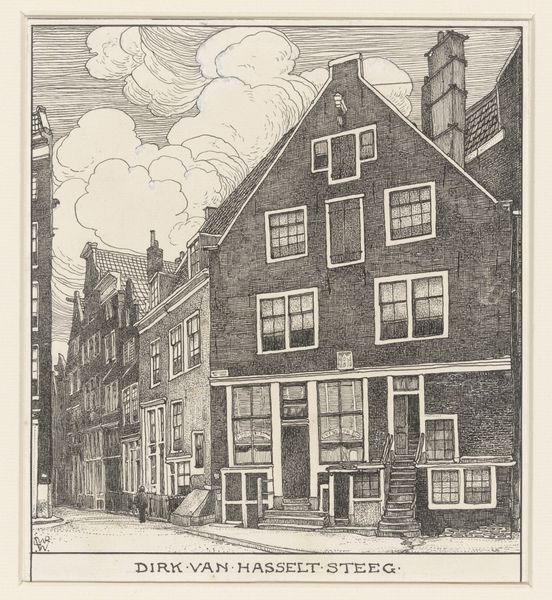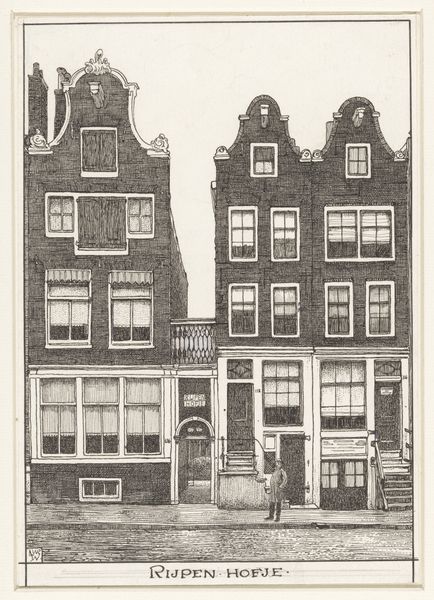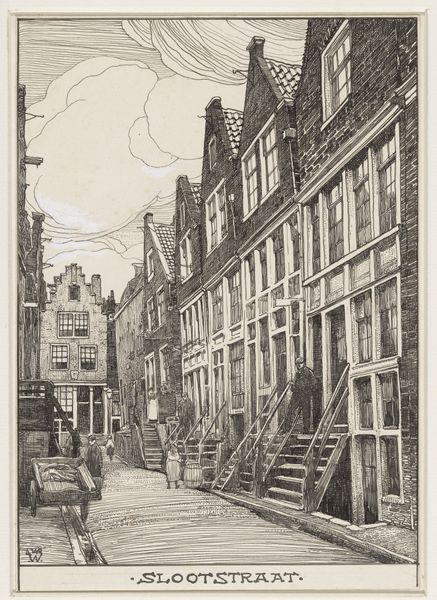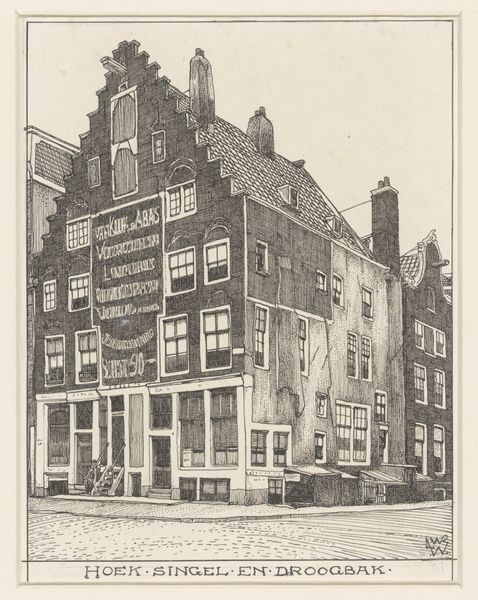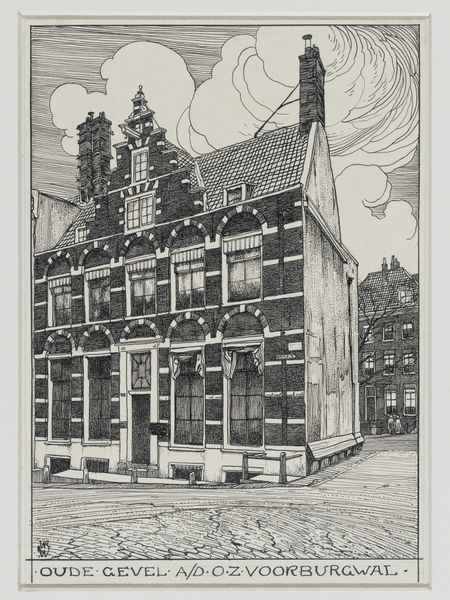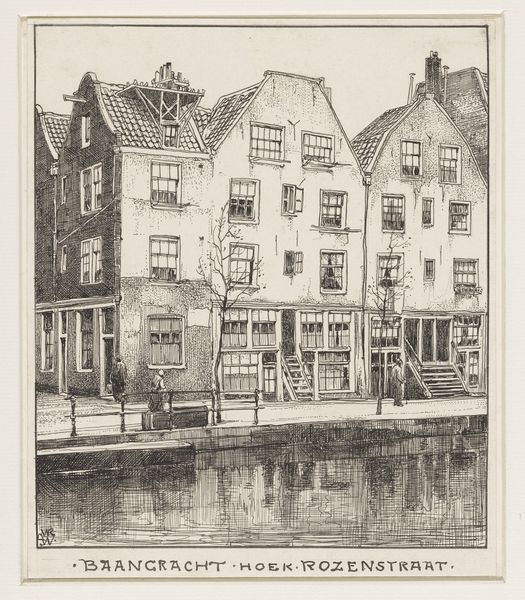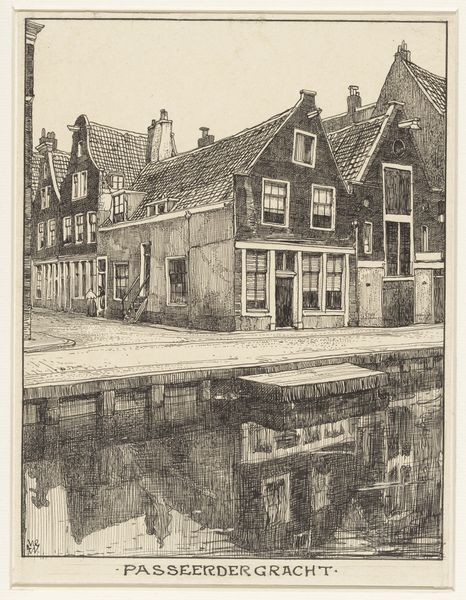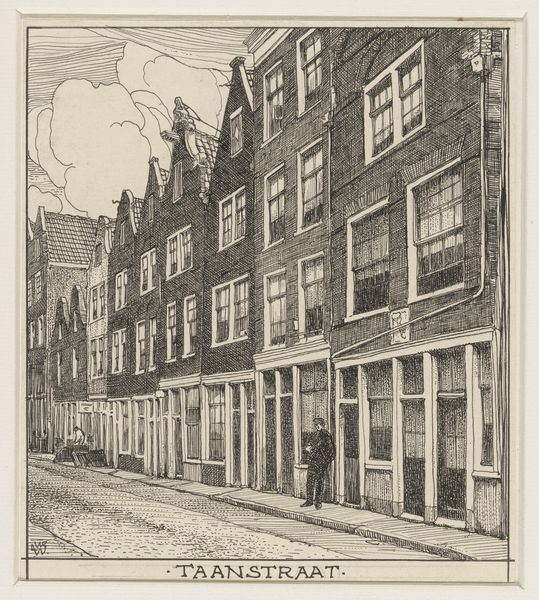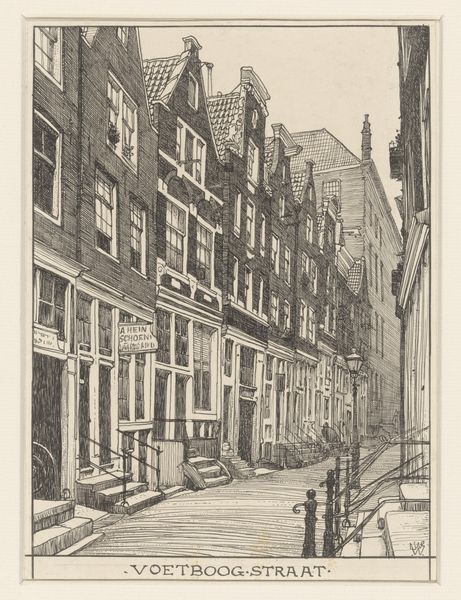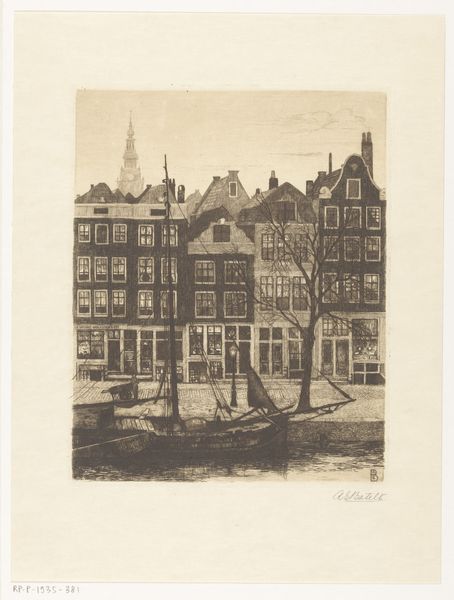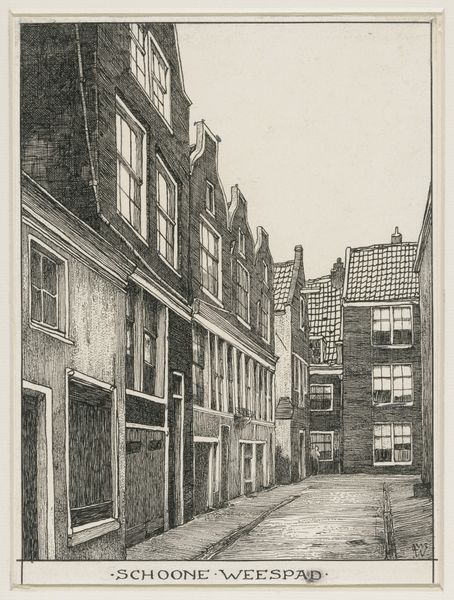
drawing, print, paper, ink
#
drawing
#
dutch-golden-age
# print
#
landscape
#
paper
#
ink
#
cityscape
#
realism
Dimensions: height 202 mm, width 185 mm
Copyright: Rijks Museum: Open Domain
Editor: So, this is "Oude huizen aan de Looiersgracht te Amsterdam" by Willem Wenckebach, dating roughly from 1870 to 1926. It's an ink drawing, and it strikes me how the meticulous linework almost makes these ordinary houses seem monumental. What stands out to you? Curator: I'm immediately drawn to the labor invested in this drawing. Consider the painstaking process of rendering each brick, each windowpane. The work isn't just depicting architecture; it’s highlighting the immense human effort embedded within the cityscape. Ink wasn't cheap then - its deployment here points towards something more than just documentation. How might the choice of ink and paper relate to the image of these "old houses"? Editor: That's interesting. I hadn’t considered the economics of art materials. I guess using ink elevates the subject, giving dignity to these, well, 'old houses', which otherwise might be overlooked. Curator: Exactly. And what does it suggest about the perceived value of these buildings and the lives lived within them? The buildings’ repeated structure indicates a functional use of housing; it makes me wonder who exactly was consuming this art, and where were they situated in relation to the residents of Looiersgracht? Editor: Perhaps the buyer could afford to live in a grander property or lived elsewhere entirely and saw these houses as a 'tourist' attraction in their print. Does the rise in the commercialisation of art affect what is deemed worthy of creation and subsequently viewed? Curator: That is certainly food for thought and I wonder about Wenckebach’s positioning in this art-historical, social, and material landscape. Editor: It’s fascinating how focusing on materials and the production process opens up entirely new ways of understanding the image. Thanks for highlighting that. Curator: Likewise. Thinking about art this way helps us ground it in real-world conditions, moving beyond purely aesthetic interpretations.
Comments
No comments
Be the first to comment and join the conversation on the ultimate creative platform.
